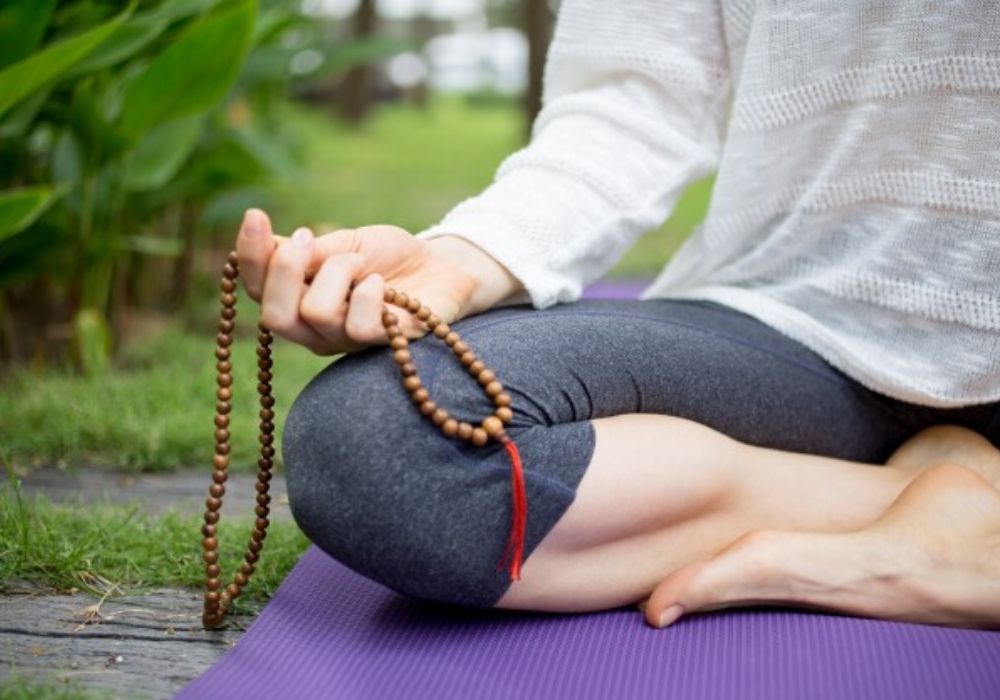
Meditation is a way to deal with preparing the psyche, like how yoga is a way to deal with preparing the body. In any case, numerous methods exist — so how would you figure out how to meditate?
It’s amazingly hard for a young aged person to sit for a considerable length of time and consider nothing or have an “empty mind.” One can use the techniques like soft soothing music playing alongside, having sound barring headphones or earbuds to help in the beginning. The least demanding approach to start your journey is by concentrating on the breath — one of the most widely recognized ways to deal with meditation and mindfulness.
Meditation offers time for relaxation and increased mindfulness in a distressing way where our senses are already dulled in today’s competitive and only giving temporary relief from day to day stress.
Instructors, spiritual leaders, and mental health specialists have created many types of meditation. All these types are designed to suit many people irrespective of their personality or way of lifestyle. For somebody who meditates, the training offers an opportunity to improve physical wellbeing, along with mental prosperity. In any case, there is no “right way” to meditate, which means individuals can investigate the various kinds until they discover one that works for them.
Quick facts about types of meditation:
- Within each type of meditation, there are a few subtypes to find and practice.
- Meditation teachers have various thoughts regarding how often and how long an individual must practice meditation.
- It is fine to mix types or to test various methodologies until the correct one is found.

Six different types of meditation techniques:
1. Spiritual Meditation
Meditation is an essential part of the spiritual traditions from the eastern world, for example, Buddhism, Taoism, and Hinduism, however, did you realize that it is also included in the numerous Judeo-Christian customs and spiritual traditions? When the meditation is practiced with a deeper religious context, where elements like a silent, spoken or chanted prayers, it supports a deeper connection with the divine. In non-theistic conventions, for example, Buddhism and Taoism, meditation is progressively centered around mindfulness and self-realization. In that sense, non-theistic spiritual meditation especially emphasizes the progress of becoming a better human being. Regardless of secular or not, the bits of knowledge that are uncovered through spiritual meditation can help us with creating characteristics of kindness and benevolence.
2. Mindfulness Meditation
This contemplation method, which has gotten incredibly well known in the West, depends on the lessons of the Buddha. Mindfulness meditation can be instrumental in helping us see how our brains work. This self-information fills in as a foundation for beating disappointment, depression, prejudice and a large number of different resentments that prevent us from living more fully more joyful lives.
There are a few stages to follow in the event that you need to get better at this type. These include:
- Recognizing your existence, starting with being aware of your body and thoughts;
- Observing your brain and each thought process arising during the process without judging or controlling it;
- Returning to the object of meditation, for example, the breath; and
- Figuring out how to rest & relax and value the present moment.
The most popular focal point of mindfulness meditation is the breath; un-judged perception of physical sensations is another common technique. At whatever point you discover your thoughts are wandering, basically notice them without judgment, and take your concentration back to your breath. Regular practice has been proved to decrease depression, stress, and anxiety. Furthermore, it encourages flexibility, a convenient quality that causes you to adapt to troublesome circumstances without losing your peace of mind.

3. Movement Meditation
Numerous types of meditation urge you to stay in one position, yet movement meditation centers around the body movements. One such form is the walking meditation; this strategy can likewise be related to yoga or tai chi and other martial arts practices. When you are able to meditate during your body movements, you can grow your attention to pretty much everybody part that keeps you moving: planting, walking your pet, cleaning up, playing, and so on. For each situation, the movement of your body is the object of meditation.
4. Focused Meditation
This technique exclusively requires us to focus solely on whatever it is that we are doing: it is specifically the reverse of performing multiple tasks. We observe and appreciate the extraordinary concentration and focused working of athletes, music players and performers, chess-players and so on, we too must be ready to concentrate on the job that needs to be done. We are advised to do multi-tasking in the fast-moving world these days, but we are just jumping from one thought to another and back and forth in the process. It is always better to be focused on one thought at a time and concentrate on the things until accomplished.
One conventional sort of focused meditation includes drinking some tea. Here, you train in stopping every other type of thought – no checking your mobile phone, no random work, no adding to the shopping list – and concentrate only on drinking some tea. You may see the vibe of warmth, the fragrance, the weight of the cup in your hand and its refreshing taste. At whatever point the brain meanders, you return to drinking tea with all pleasure.
Whatever the object of your meditation, you should concentrate your whole consideration on it. At the point when you’re eating, you’re mindful of the sensations associated with eating; when you’re working out, you’re mindful of the sensations associated with working out. On the off chance that you notice that your mind is diverting, you must basically recognize that and take your concentration back to what you’re doing. With practice and training, your capacity to think will improve and you may rediscover the delight of each thing you do.
5. Visualization Meditation

In a basic manner, we can close our eyes and envision a delightful mountain lake, an open sky, a natural scene, or whatever other representation that addresses us. In one other word, we can visualize ourselves being getting relaxed and enjoying the peace, beauty, and scenery around. This deep relaxing thought and experience increase compassion and wisdom.
A few people think visualization meditation is a sort of break from the world since we envision something that isn’t generally there. In any case, looking at this logically, we understand that quite a bit of what goes on in our thoughts for the duration of the day includes recollections of the past or concentrating on expectations and fears for the future – and these aren’t generally there either! Mediation is a procedure that utilizes this intensely inventive part of the mind for constructive individual change.
6. Chanting Meditation
Numerous spiritual paths, from Western religions to Buddhist and Hindu customs, suggest reciting and mantra meditation. While reciting or chanting, the brain ought to be focused around the sound of the words and tune. Western conventions additionally support thought of significance. In mantra meditation and other Eastern conventions, a monotonous sound, word, or expression is utilized to clear the mind and permit our otherworldly qualities to uncover themselves. Mantras are in some cases joined by a song, however not generally. “Om” is one regular sound utilized in mantra Meditation.

The individuals who do chanting or jap meditation regularly find that their training develops a calm, yet alert, perspective. As a spiritual practice, it cultivates further mindfulness and a more grounded association with positive human characteristics, for example, sympathy and certainty. Similarly, as with any spiritual practice, it is essential to learn it through a certified and qualified teacher.
